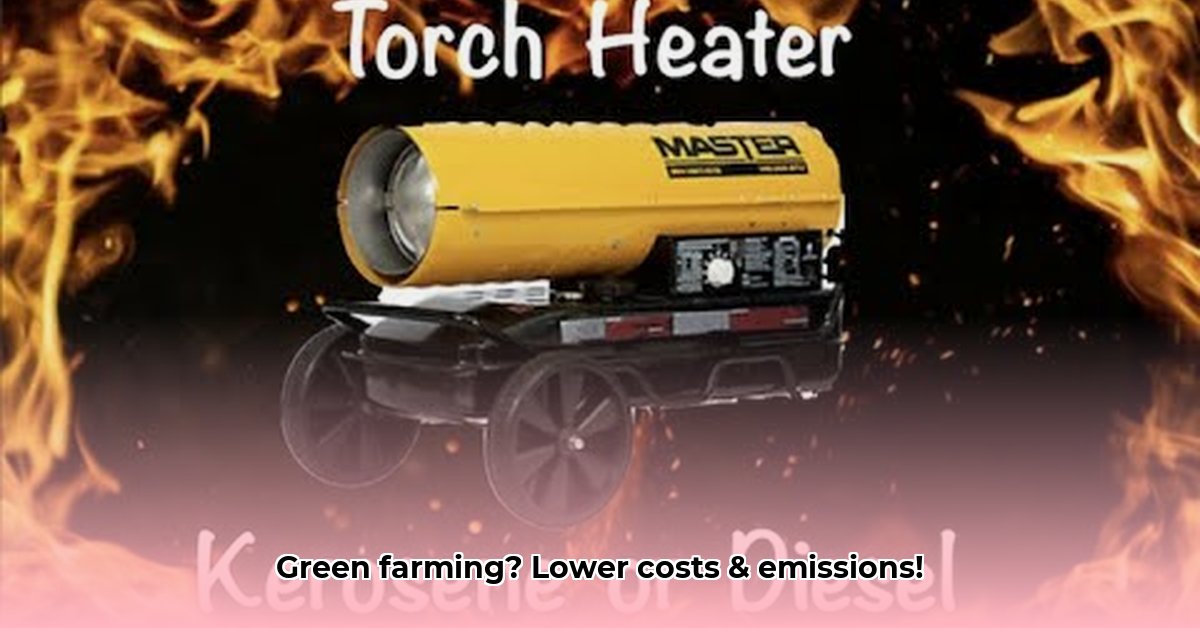
Assessing Your Farm's Heating Needs: A Tailored Approach
Sustainable heating isn't a one-size-fits-all solution. Before exploring options, accurately assess your farm's unique needs. This crucial first step ensures you select a system that truly meets your requirements and avoids costly mistakes. What is the total square footage of your heated buildings (barns, greenhouses, etc.)? What are the average winter temperatures in your region? A professional energy audit can help identify areas for improvement in insulation. These improvements can significantly reduce energy needs before even selecting a heating system, leading to considerable long-term savings. For more information on sustainable farm practices, check out this useful resource.
Consider these key factors:
- Building Size and Type: Larger structures require more powerful systems. The type of building (barn, greenhouse) impacts temperature requirements.
- Climate: Colder climates demand more robust heating solutions, influencing technology selection and system capacity.
- Operation Type: Livestock operations have different temperature needs than crop production. Some applications (like greenhouses) might require more precise temperature control.
- Budget: Set a realistic budget, including upfront costs and ongoing operational expenses. Consider potential long-term savings from reduced energy consumption.
Remember, this thorough assessment is essential for cost-effective, efficient heating. Don't rush this step – it lays the foundation for a successful transition.
Exploring Sustainable Heating Options: A Comparative Analysis
Several sustainable heating technologies offer viable alternatives to traditional methods. Let's comparatively analyze their pros and cons:
1. Air-Source Heat Pumps: Efficiency and Versatility
Air-source heat pumps efficiently move heat from the outside air to your buildings in winter, and reverse the process for cooling in summer. They are widely available and offer a good balance of cost and efficiency, especially when coupled with solar PV (photovoltaic) panels for electricity generation.
- Pros: Relatively low upfront cost, efficient heating and cooling, widely available, easily integrated with renewable energy sources.
- Cons: Efficiency decreases significantly in extremely cold climates. Supplemental heating may be required in severe winters.
2. Geothermal Heat Pumps: Consistent Performance and High Efficiency
Geothermal heat pumps tap into the stable temperature of the earth to provide highly efficient heating and cooling year-round. While the upfront installation cost is higher due to the need for a ground loop (a network of pipes buried underground), the long-term energy savings can be substantial.
- Pros: Exceptionally energy-efficient, consistent performance regardless of outside temperatures, very low operating costs, long lifespan.
- Cons: High initial installation costs, requires sufficient land area for ground loop installation, site-specific suitability based on geology, potentially disruptive installation process.
3. Biomass Systems (Wood, Pellets): Utilizing Renewable Resources
Biomass systems burn organic materials like wood pellets or agricultural waste to generate heat. This can be cost-effective if you have access to readily available biomass fuel. However, proper management is essential to avoid air pollution.
- Pros: Potentially low operating costs if fuel source is readily available, utilizes renewable resources, reduces reliance on fossil fuels.
- Cons: Requires dedicated fuel storage and handling, potential for air pollution if not properly managed and maintained, may not be suitable for all locations due to fuel availability and air quality regulations.
4. Solar Thermal Systems: Harnessing the Sun's Energy
Solar thermal systems use collectors to capture sunlight and convert it into heat for water or air heating. This is a clean, renewable energy option, particularly effective in sunny regions.
- Pros: Clean and renewable energy source, reduced reliance on grid electricity, low operating costs once installed, long lifespan.
- Cons: High upfront installation cost, performance heavily dependent on sunlight availability (supplemental heating may be needed), substantial roof or ground space requirement.
Choosing the Right System: A Decision-Making Framework
Selecting the ideal system requires careful consideration of your specific circumstances. Use the following table to compare key factors:
| Factor | Air-Source Heat Pump | Geothermal Heat Pump | Biomass System | Solar Thermal |
|---|---|---|---|---|
| Upfront Cost | Moderate | High | Moderate to High | High |
| Operating Cost | Low | Very Low | Low (fuel-dependent) | Low |
| Environmental Impact | Low | Low | Moderate | Low |
| Space Requirements | Minimal | Moderate | Moderate to High | Moderate to High |
| Climate Suitability | Moderate | Excellent | Moderate | Good (sunny regions) |
Remember, this is a general comparison. Consult with energy specialists and installers to tailor a solution to your specific situation.
Implementation and Maintenance: Ensuring Long-Term Success
Proper installation and regular maintenance are crucial for optimal performance and longevity. Always hire qualified professionals experienced in the chosen technology. This ensures safety and optimal efficiency. Routine maintenance, following the manufacturer’s instructions, minimizes costly repairs and maximizes system lifespan, ensuring the long-term cost-effectiveness of your investment.
Dr. Emily Carter, Professor of Chemical and Biomolecular Engineering at Princeton University, emphasizes: "Proper system maintenance is not merely a best practice—it’s essential for maximizing the return on investment and ensuring the long-term sustainability of your chosen heating solution."
Financial Incentives and Resources: Reducing Upfront Costs
Many governments offer significant financial incentives (grants, tax credits, rebates) to promote the adoption of sustainable heating. Research your local, regional, and federal programs to potentially reduce upfront costs substantially and make the transition to green heating more affordable. Your local agricultural extension office or utility company can provide guidance on available programs and resources.
https://www.energy.gov/eere/heating-cooling/renewable-heating-cooling
Conclusion: Embracing a Sustainable Future
Adopting sustainable heating technologies not only reduces your environmental impact but also offers long-term cost savings. By thoroughly assessing your needs and carefully selecting a suitable system, you can create a more efficient, environmentally conscious, and economically viable farm operation. The transition to green heating is an investment in a healthier planet and a more prosperous future.